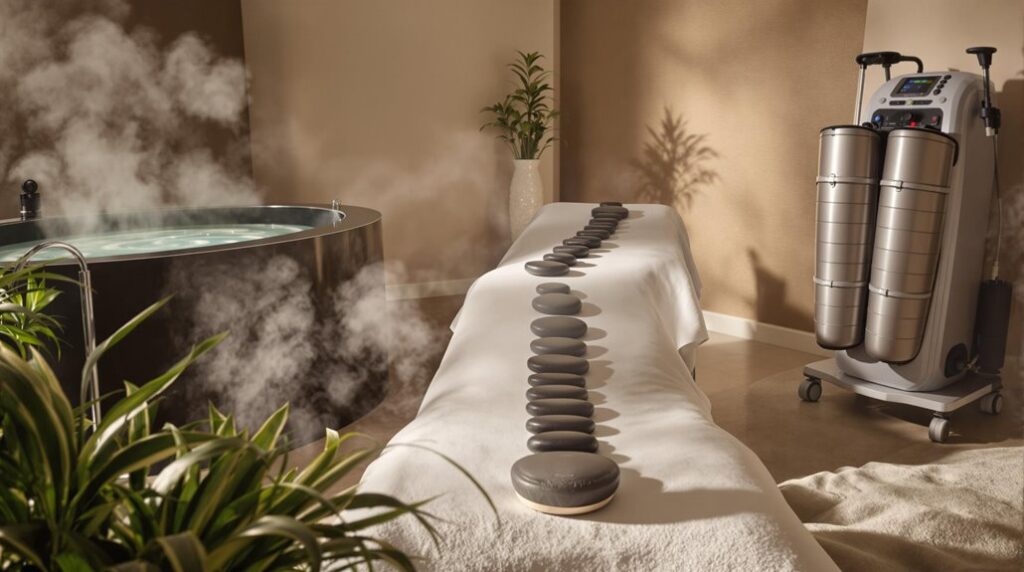You'll find three highly effective therapies for post-exercise muscle recovery: sports massage therapy, myofascial release techniques, and deep tissue compression. Sports massage increases blood flow and reduces inflammation, while myofascial release targets connective tissue to break up adhesions. Deep tissue compression applies sustained pressure to release chronic tension and enhance recovery. Each method offers specific benefits through varying pressure levels, from light touch for circulation to deep pressure for structural realignment. Understanding these approaches opens doors to ideal recovery strategies.
Sports Massage Therapy Benefits for Muscle Healing
While athletes have long relied on various recovery methods, sports massage therapy stands out as one of the most effective techniques for muscle healing and rehabilitation. You'll find that this hands-on approach helps increase blood flow to your muscles, reduces inflammation, and breaks down scar tissue that can form after intense physical activity.
When you receive a sports massage, the therapist's targeted pressure and specific movements help release tension in your muscle fibers, improving your flexibility and range of motion. The therapy also stimulates your lymphatic system, which aids in removing metabolic waste and reducing post-exercise muscle soreness. You'll typically notice decreased muscle stiffness within 24-48 hours after treatment, and regular sessions can help prevent future injuries by maintaining ideal muscle condition and promoting faster recovery between training sessions. Additionally, sports massage therapy accelerates the body's healing process, making it an invaluable tool for athletes and active individuals alike.
Myofascial Release Techniques and Recovery
As your muscles undergo daily stress and tension, myofascial release techniques offer targeted relief by addressing the connective tissue that surrounds and supports your muscular system. You'll find that these methods help break up adhesions and restore mobility through sustained pressure and specialized movements.
- Self-myofascial release using foam rollers targets large muscle groups, helping to increase blood flow and reduce post-workout soreness.
- Trigger point therapy focuses on specific knots within the fascia, releasing tension through direct, concentrated pressure.
- Dynamic stretching combined with myofascial work enhances range of motion and flexibility.
- Professional manual therapy sessions can address deeper fascial restrictions that self-treatment might miss.
Incorporating these techniques into your recovery routine not only aids in muscle recovery but also aligns with the principles of evidence-based guides for optimal performance and injury prevention. You can incorporate these techniques into your recovery routine, either independently or with a trained practitioner, to maximize their effectiveness and promote faster healing.
Deep Tissue Compression and Muscle Rejuvenation
Deep tissue compression takes myofascial release to the next level by applying sustained, focused pressure that penetrates deeper layers of muscle tissue. You'll find this technique particularly effective for releasing chronic tension and breaking down adhesions that can limit your range of motion. Additionally, incorporating sports massage can further enhance recovery and performance for athletes.
| Pressure Level | Benefits |
|---|---|
| Light (1-3) | Increased blood flow, reduced soreness |
| Moderate (4-6) | Enhanced flexibility, toxin release |
| Firm (7-8) | Scar tissue breakdown, improved mobility |
| Deep (9) | Chronic knot release, structural realignment |
| Maximum (10) | Adhesion breakdown, lasting tension relief |
When you're using deep tissue compression, whether through foam rolling or professional massage, you'll want to progress gradually through these pressure levels while paying attention to your body's response and tolerance.

